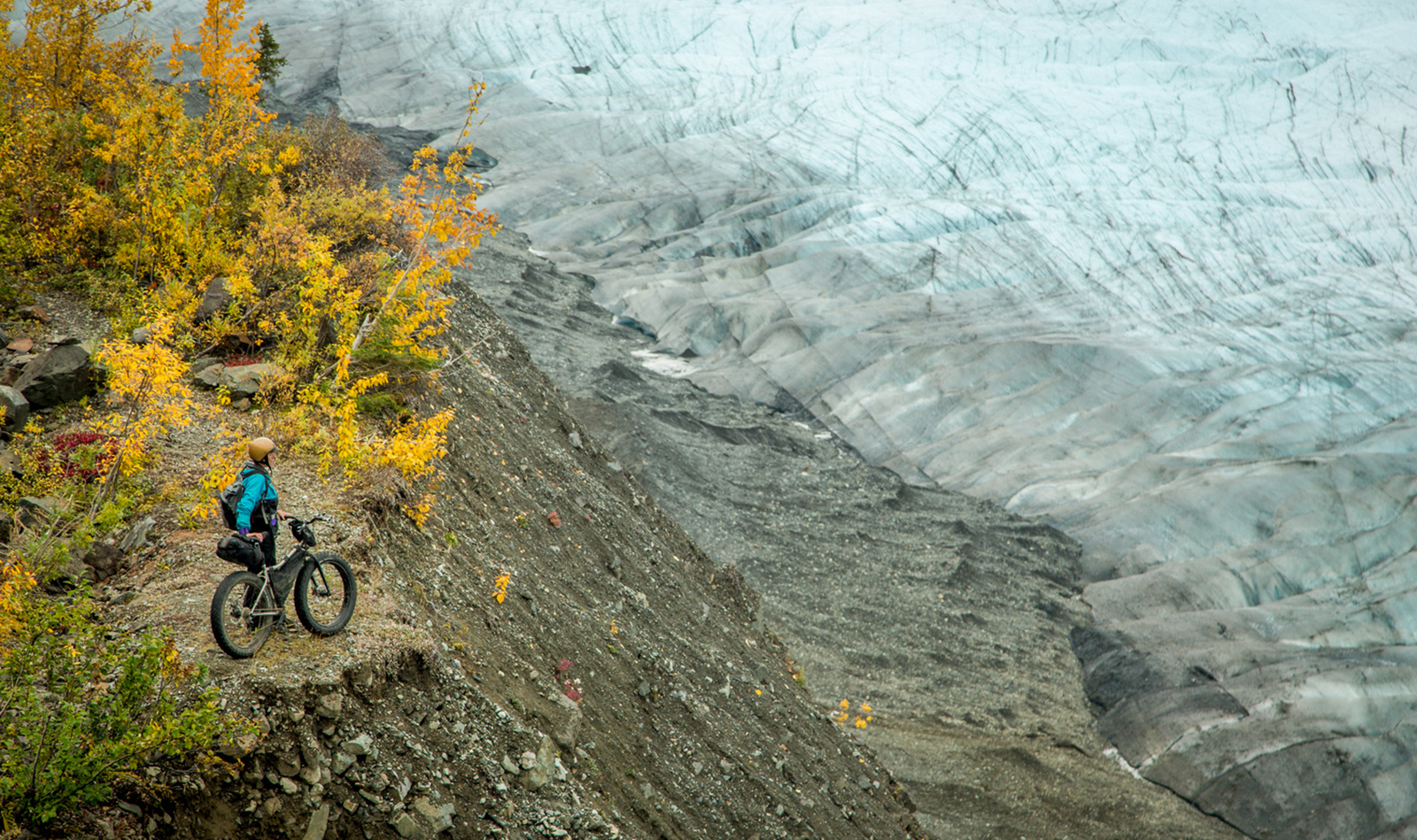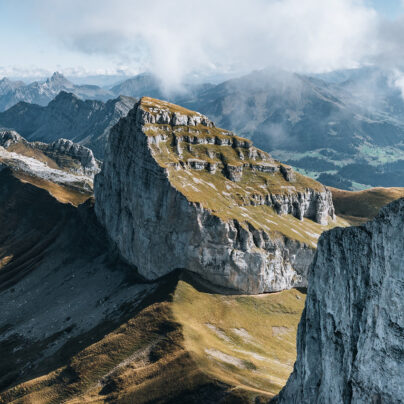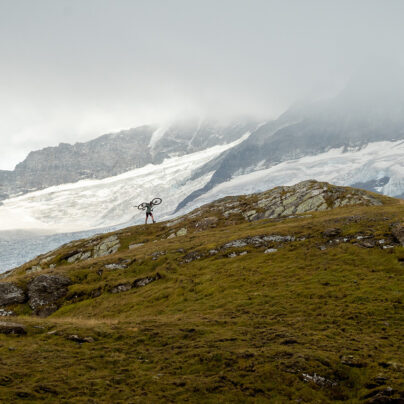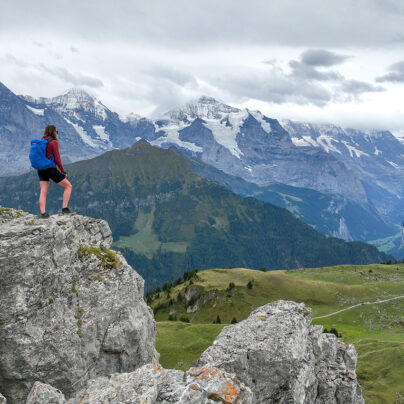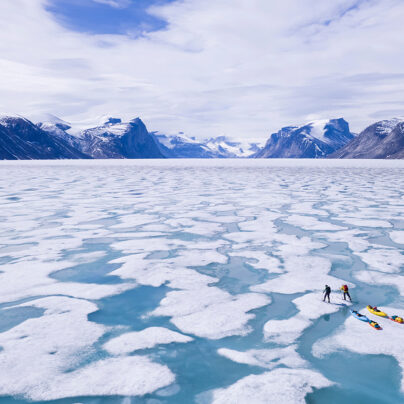Backpedaling in the Wrangells
A Fatbike & Packraft Journey in Alaska
Bjørn Olson
The Wrangells are a range of massive, heavily glaciated, volcanoes in eastern, interior Alaska. They are both where I was raised and where I lived as a young ‘man’ and had done more to shape me than any other place ever has or could. I was excited to share them with Kim and to have an opportunity to reconnect after many years away.
Our goal was to traverse from north to south in one of the few non-glaciated routes within the range. September could be a great month for this trip because the creeks and rivers are low, but the threat of early snow is very real, and night-time temperatures drop well below freezing this time of year. We were a little worried that the route offers no easy bailout option and that we’d not be carrying the In-Reach tracking device, but our enthusiasm was in overdrive. I had wanted to do this trip for many years.
Snow had descended below 2,000 feet the morning we drove the Nabesna road. By mid-day we could see the warmth of the sun melting it back up the hills. Nervous discussions ensued about snow and the fact that we’d be crossing passes of five and six thousand feet in elevation. “It’s become so hard to predict the weather.” Cole Ellis said, as we discussed our route with him at Devils Mountain Lodge. My father had guided with Cole in the early 70s and his family had been living in the Wrangells since the 50s. I was thankful that he didn’t think us stupid or reckless for attempting our trip this late in the season but he mentioned the value of the safety net in the form of a tracking device. He was as ambivalent about the weather as us and agreed that it could go either way.
After a visit and tour of the property, Kim and I loaded our bikes, shouldered our packs and headed down the trail. Autumn colours in the big mountains defy description and pull much needed attention from our gazes. We’d stop every time we rounded a bend or entered a clearing to take in the majestic and colorful landscape.
Kim and I loaded our bikes, shouldered our packs and headed down the trail. Autumn colours in the big mountains defy description and pull much needed attention from our gazes. We’d stop every time we rounded a bend or entered a clearing to take in the majestic and colorful landscape.
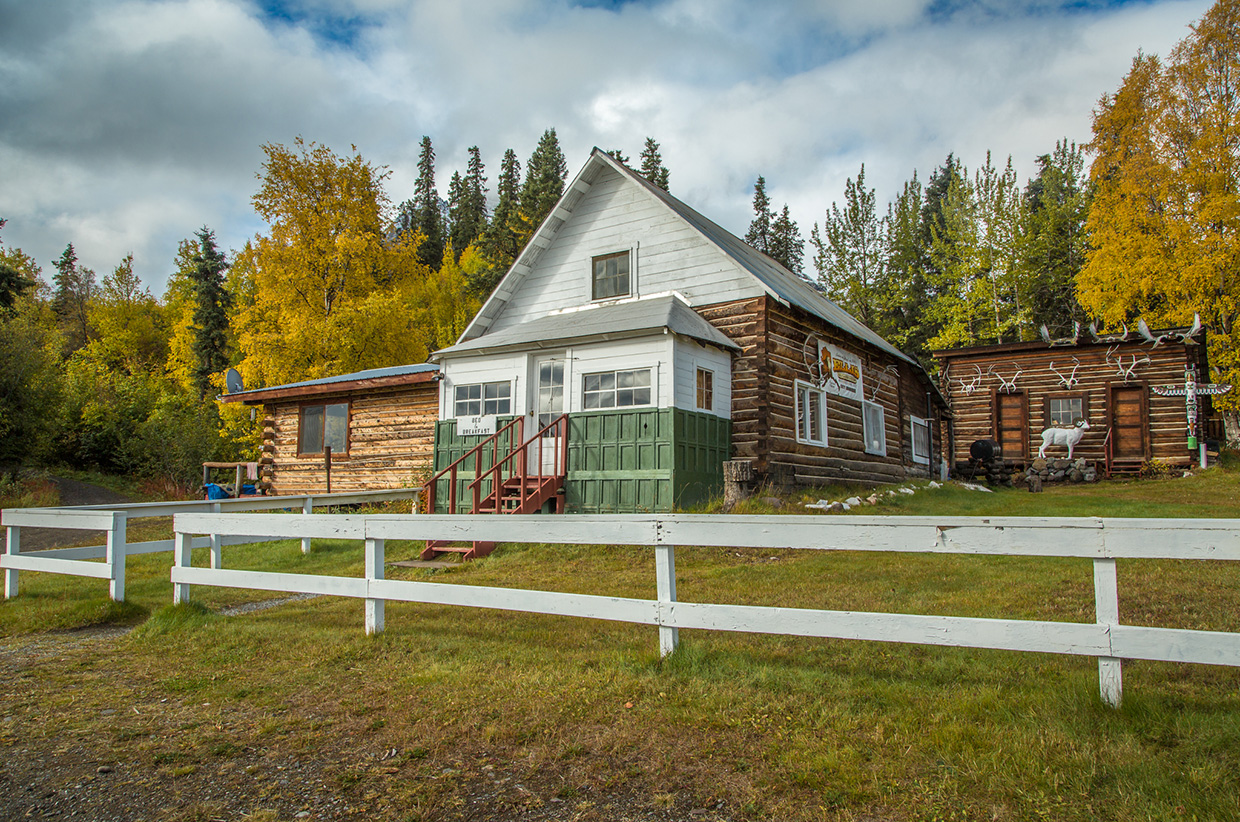
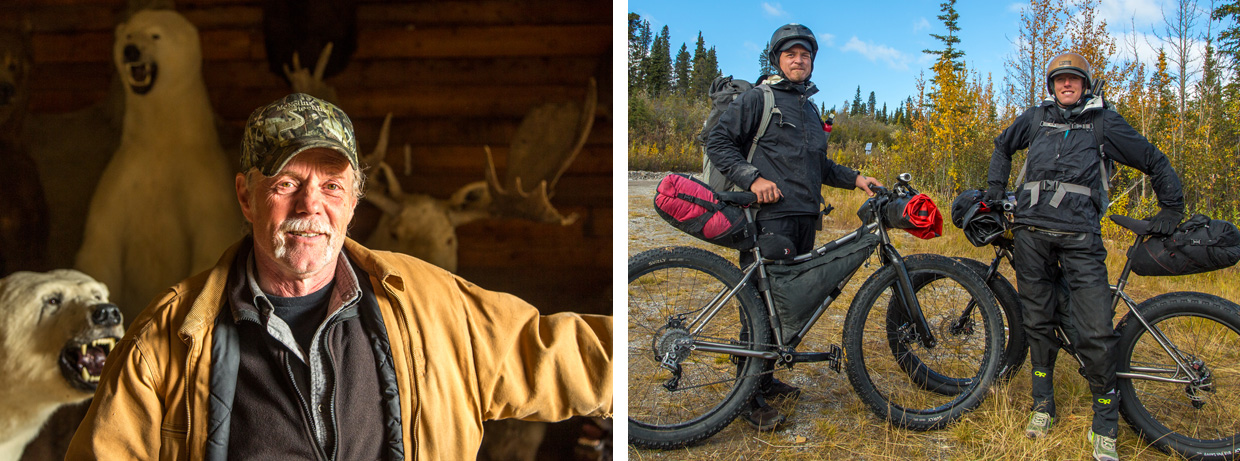
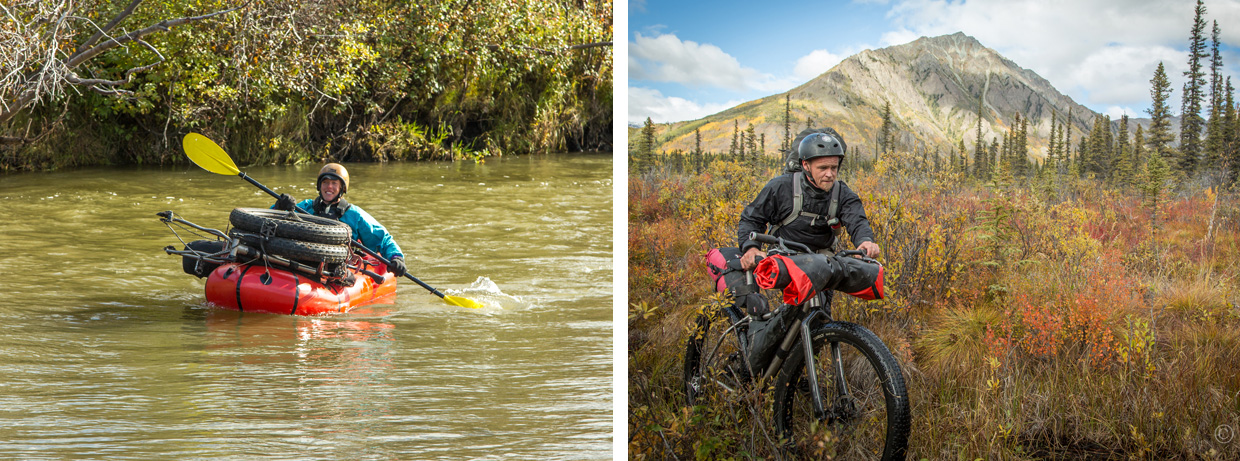
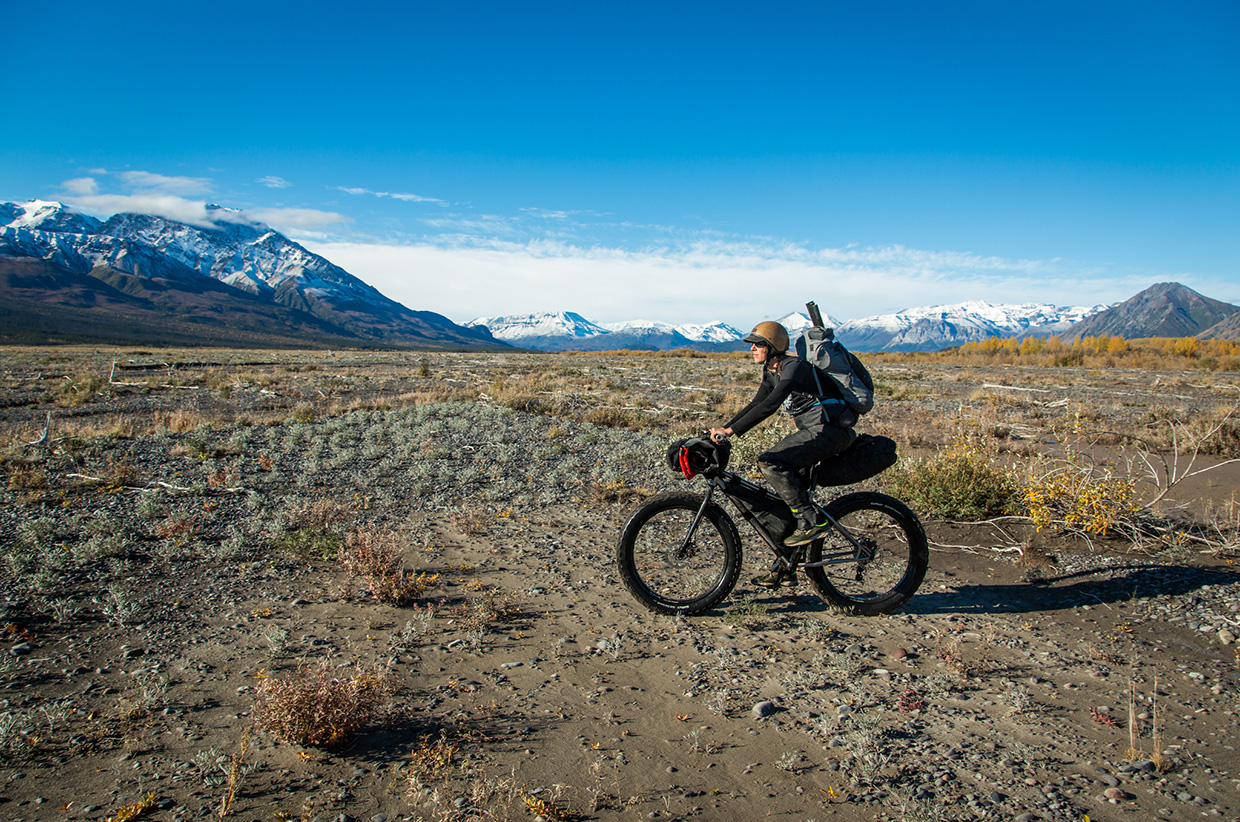
A biting cold and near gale force wind blew up river. Whenever we got out to scout or portage, it was mandatory to anchor and weigh down the rafts with with big, heavy rocks. Paddling down river never seemed so slow. Summer was clearly over.
A biting cold and near gale force wind blew up river. Whenever we got out to scout or portage, it was mandatory to anchor and weigh down the rafts with with big, heavy rocks. Paddling down river never seemed so slow. Summer was clearly over.
Riding up riverbeds on big tired bikes is tremendous fun. Micro lines through a series of seemingly unrideable rocks present themselves at the last second. Just when you think you’ll have to dismount and push, the line comes into focus and you power/navigate through. Little bursts of elation pop in your head every time a successful passage over the rocks falls behind you.
Kim and I worked our way up the creek for the first half of the day until we reached a fork. From there the incline steepened, the rocks became bigger and the bike pushing began. Earlier, Kim had been swept off her feet during one of the many creek crossings. Our new creek bed flowed with less water but the nervous pit in our stomachs returned. There were many creeks to come.
“This is nowhere near where we are.” I was reading the latitude and longitude on our GPS and lining them up on our map. The two lines intersected on the map but they were 20+ miles to the north west of our actual position. We’d been leaving “breadcrumbs” as we went but until now we hadn’t taken the time to read our coordinates and impose them on the map. We shut the unit off and tried again. The result was the same. “We’ve put in a long day. Let’s sleep on this problem and address it in the morning.” I said.
The next morning, over coffee, we discussed long and hard the situation we were in. Excluding navigation equipment, our gear was awesome. Our hearts and bodies were in but our minds couldn’t get over our inability to navigate in anything but clear weather. “What happens when we reach the Chitistone and it snows?” “Will we be able to find the pass and what about the skinny little goat trail on the 40+º slope?” There are many wrong ways to go but only one right one. The day was beautiful and clear but light cirrus clouds were brewing in the southern sky.
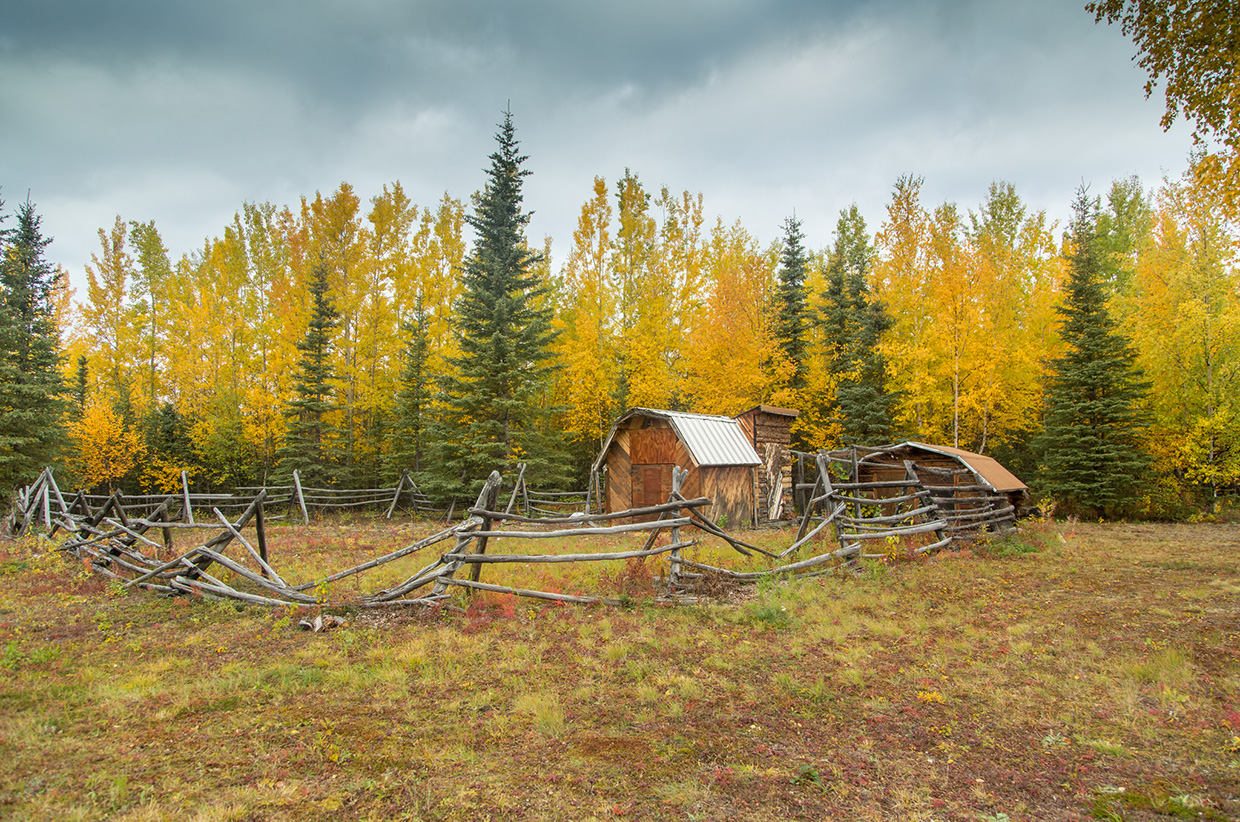
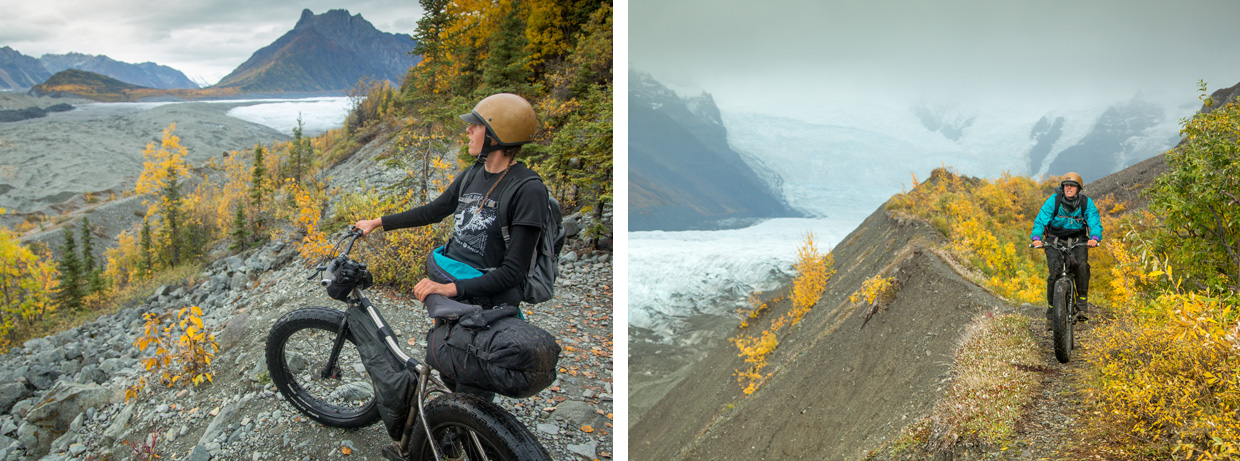
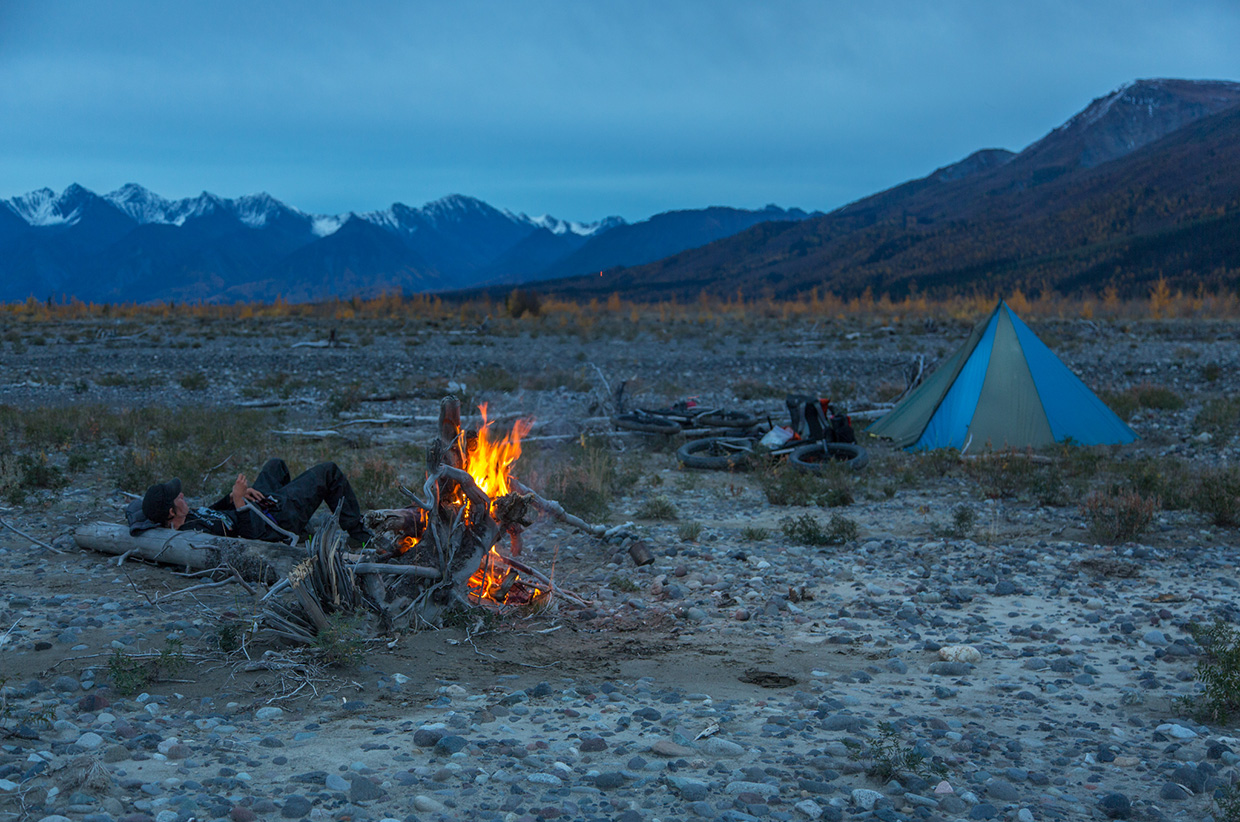
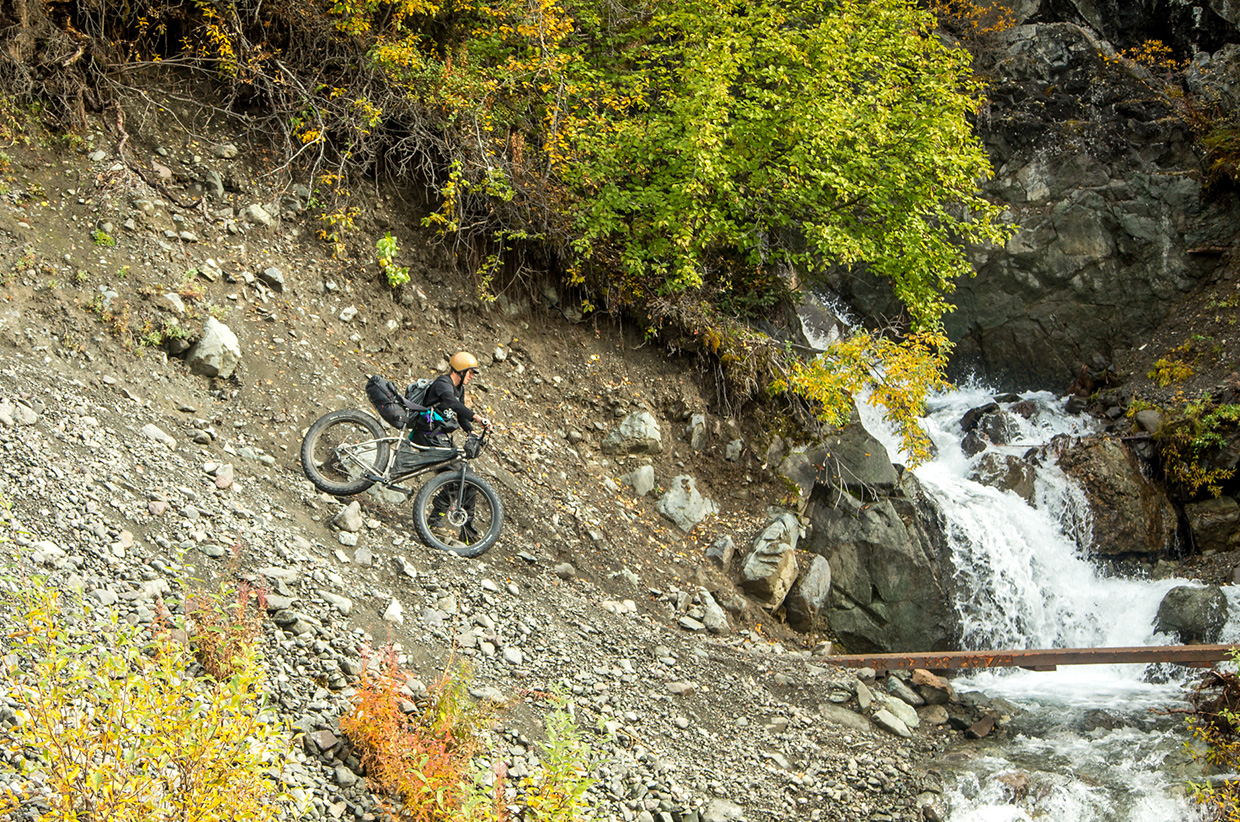
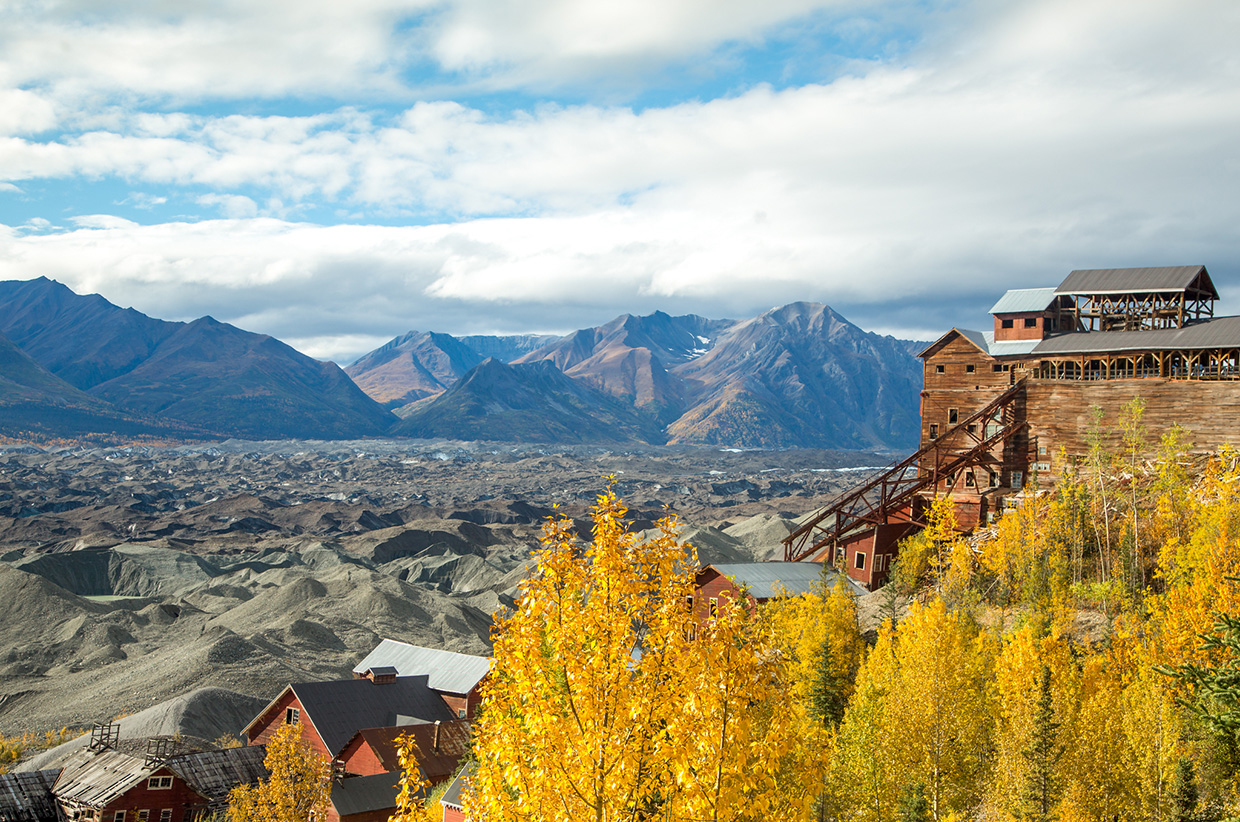
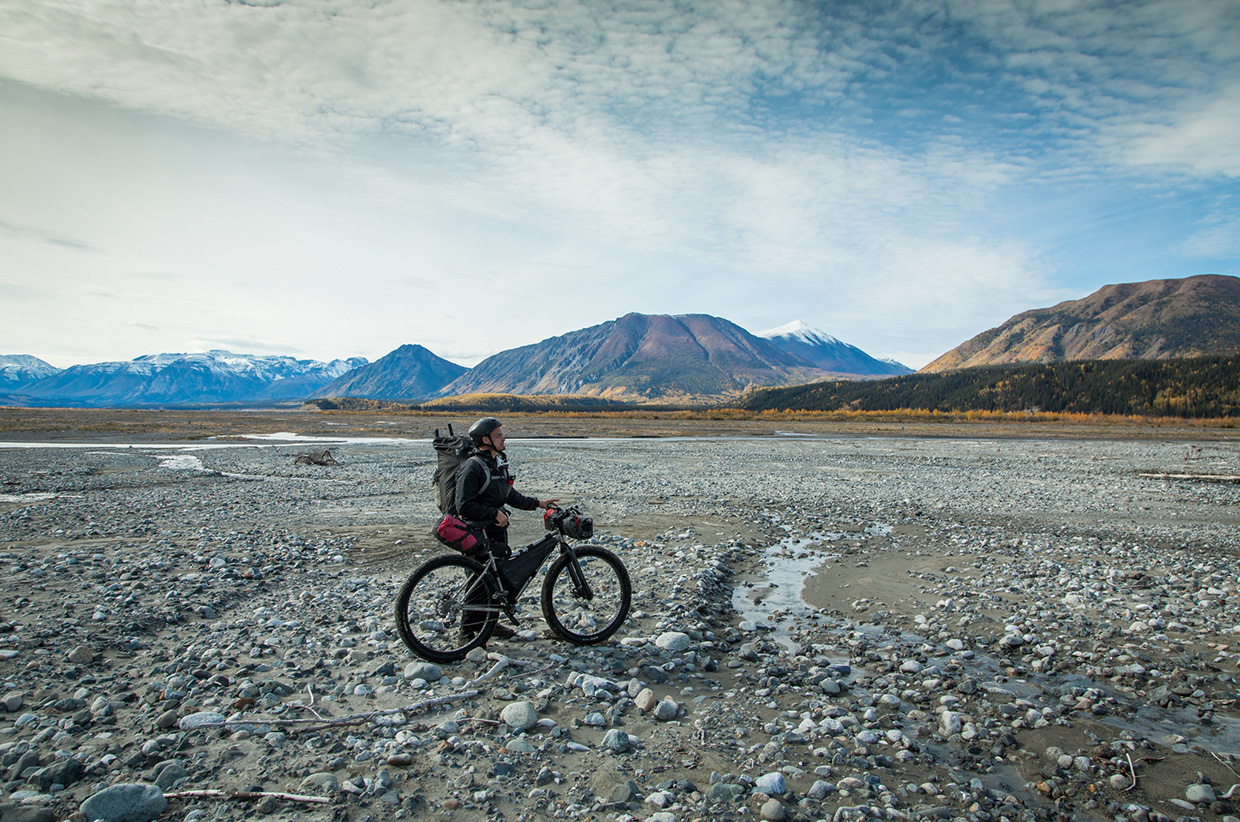
Before we left I received the news that a good friend and an incredible adventure had gone missing. It would be months before his body was found and positively identified. And another well-seasoned Alaskan adventurer had perished in the summer while packrafting a swift river during a wilderness race. Serious injury and death is and has always been part of the conscious bargain adventurers and explorers make. Through my life I have come frighteningly close to death in the wilderness more than once and have known many who have not returned.
There is almost a morbid fascination I have with reviewing what went wrong from my own mistakes and the luckless that have perish in the wild. In many cases, a chain of events that begins with a small chink in the armor sets off a terrible cascade that can often prove fatal.
As the morning wore on more cirrus moved into the sky and we made the tough decision to retreat. Our only consolation was that we would come back and this had been a good reconnaissance. Our return trip involved biking back up the broad, rock and gravel bank of the Nabesna River. It never ceases to amaze me how perfectly adapted big tire bikes are for much of Alaska’s remote terrain and we made the most or our loop back to the truck, through what felt like a throne room for giants.
Days later one of us would bellow, “Damn! I bet we’d have been fine. We should have tried.” The other would console, “We made the smart decision and need to accept and remember that.” An hour later, the roles would reverse and the bellyaching would begin all over again.
I miss my friends who have died doing what they love in the wilderness and admire them for living full and rich lives. I respect them for pushing their personal boundaries and measuring themselves against the greatest teacher of all – nature. I think of them often but never more so than when I am confronted with making a tough decision in the wilderness. To live and ride again is the best I can think to do to evoke and honour their memories.
Note: When we returned home I contacted the Federal Aviation Administration (FAA) to inquire about our misbehaving GPS. Mass coronal ejections had been occurring while we were out and it was presumed that these electro magnetic disturbances were our culprit. I also learned that the US Air Force often does controlled shutdowns of GPS satellites and there is a website that announces these scheduled interferences. Good information to know before embarking on the next adventure.
Photography ©Bjørn Olson.



